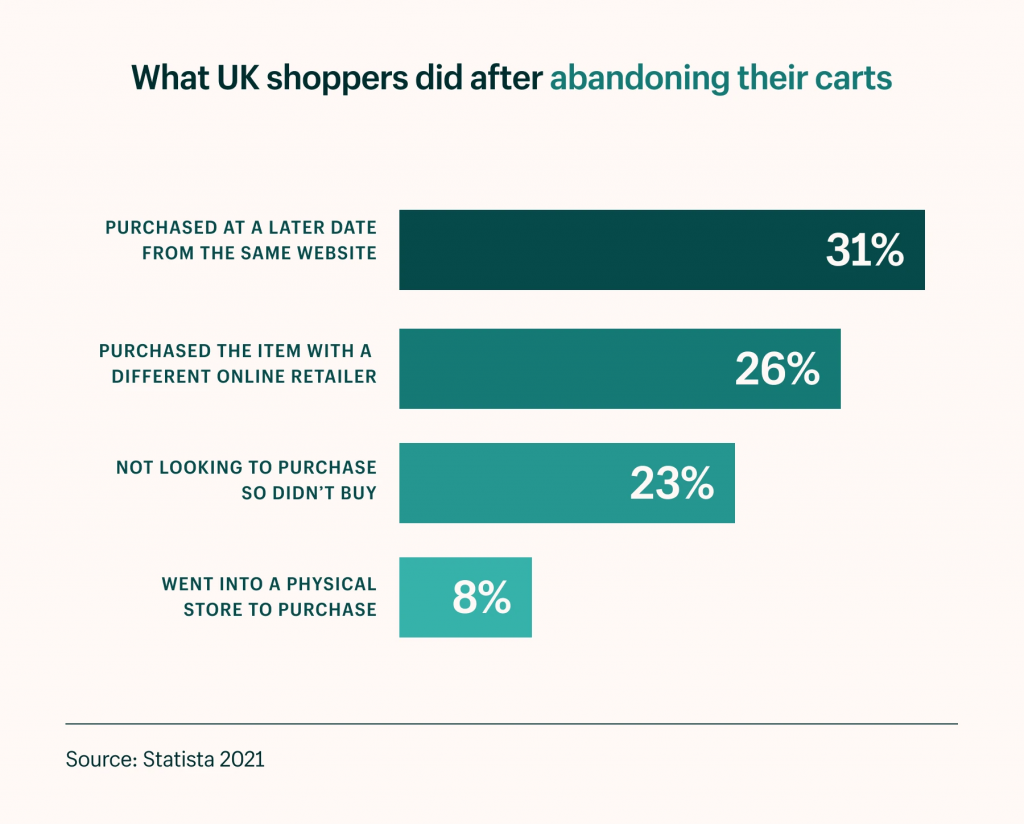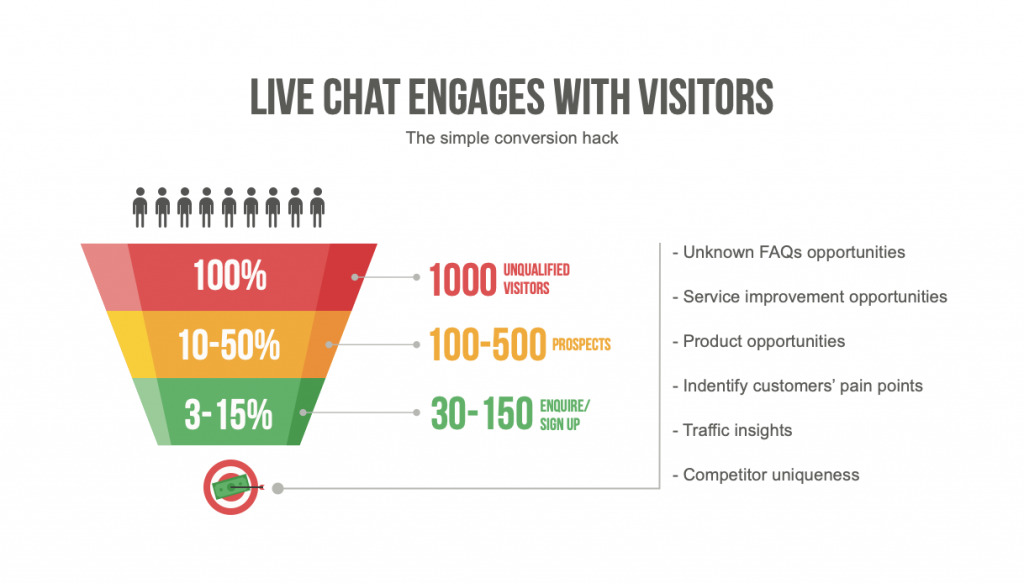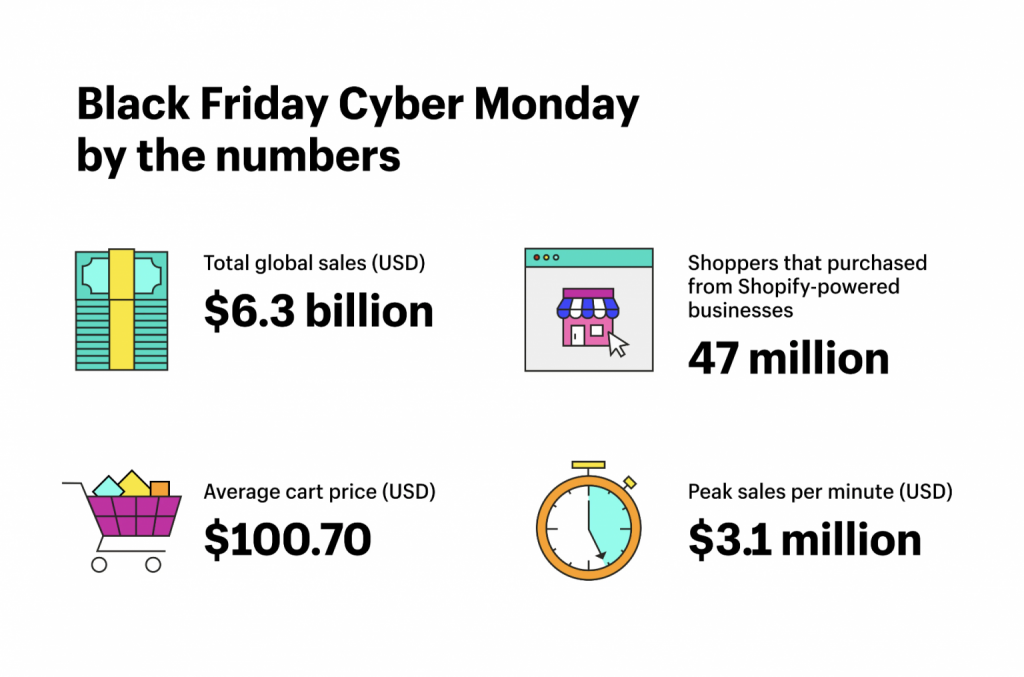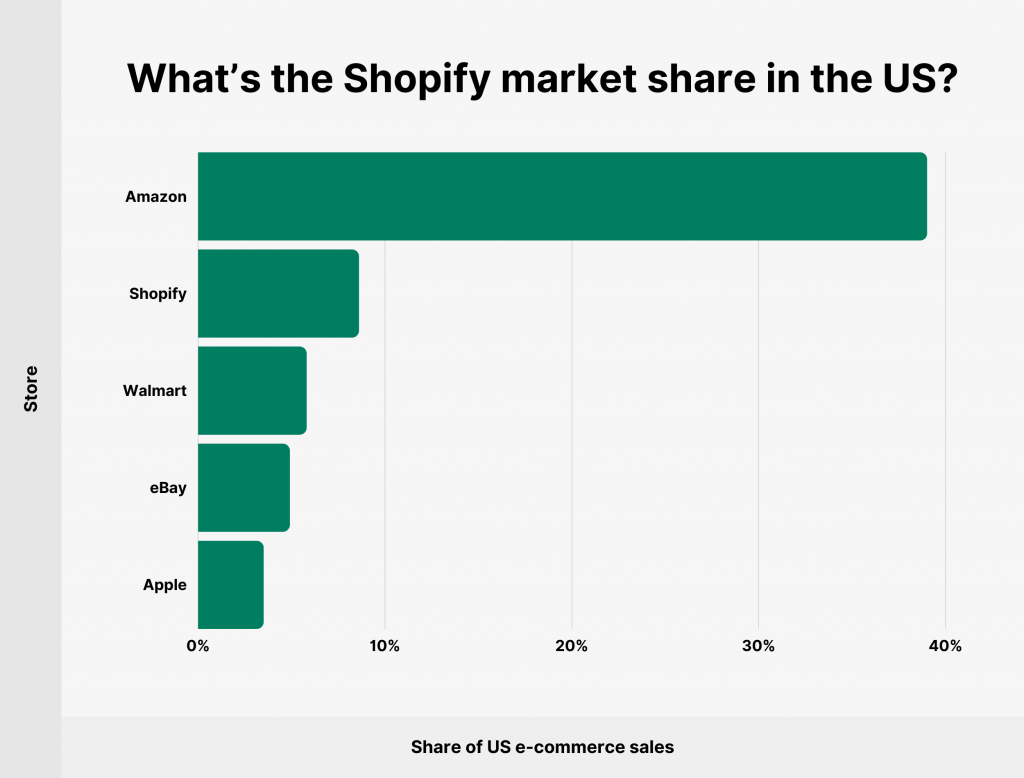
Shopify, the unquestionable leader in the e-commerce world, holds a dominant national market share, accounting for a staggering one-third of all online sales. However, what exactly makes Shopify so successful? What are the secrets hidden within its platform that allow businesses of all sizes to thrive online? This exploration will delve into the intriguing world of Shopify stores, revealing key statistics and strategies that can unlock your e-commerce potential.
- Mobile traffic accounts for 79% of all traffic on Shopify.
The good news for Shopify business owners is that a resounding majority of customers use their mobile devices to make purchases. Shopify reports that in the first quarter of 2022, 79% of all orders and 69% of all traffic on the platform came from mobile devices. and 21% remaining comes from desktop and tablet devices.
- Shopify revenue from returning clients is 300% higher than that from new ones.
Data from over 10,000 Gorgias users shows that customers who submit multiple orders ultimately generate 300% more revenue. Even though they only account for 21% of all customers for most brands, these loyal customers do generate 44% of all sales.
- With a rate of about 4.29%, email has the greatest conversion rate for Shopify stores.
Email marketing is still the best approach to drive e-commerce purchases, per BuiltWith data. Shopify merchants’ marketing emails have a conversion rate of approximately 4.29%, which is greater than that of pay-per-click advertising, social network marketing, and SMS marketing.
- Before checking out, 70% of shopping carts are abandoned.
Seventy percent of shopping carts never result in orders, according to the Baymard Institute. Additionally, the rate increases to around 86% on mobile devices. The most frequent cause of abandoned transactions is unexpectedly large shipping and other charge costs, while speed bumps in the checkout process rank well among the other prevalent causes.

- The top-performing Shopify stores have over $10 billion in sales.
According to recent studies, the combined yearly sales of all Shopify stores in 2021 came to just over $4.6 billion. With a little over $10 billion in revenue when combining this gross merchandise volume (GMV) for 2021 with all of the annual revenue totals since 2015, it is clear that Shopify has taken the lead in the global e-commerce sector.
- Active live chat increases order value on average by 10% to 15%.
Customers tend to place greater orders from Shopify companies that actively engage with their customers by responding to inquiries, offering assistance and discounts, and sharing suggestions. Data from Shopify indicates that following a live chat session, average order value (AOV) increases by 10% to 15%. A brand’s total income can increase by 13% with proactive live chats, according to Gorgias statistics from over 10,000 merchants.

- 80% of the time, top online retailers lead in excellent customer experience (CX).
Research continuously demonstrates a robust relationship between successful businesses and a pleasant customer experience (CX), with 80% of the biggest online merchants setting the standard for CX. This figure emphasizes how crucial it is for all e-commerce companies, regardless of size or sector, to give customer experience (CX) top priority.
- The cost of obtaining a new customer 5 years ago was 60% lower.
As per ProfitWell, the CAC of businesses experienced a rise of almost 60% from 2014 to 2019. And that is exactly what is happening as the amount that Shopify is paying to acquire a new customer increased 70% from $975 in 2017 to $1,660 in 2018. It is understandable for the incredible increase in CAC because Shopify may have altered its customer acquisition strategy to target a premium or niche audience, which typically demands more expensive marketing efforts, resulting in a higher CAC. Shopify’s recent international expansion strategy may increase CAC by requiring adaptation to different advertising landscapes and marketing strategies. This platform must adapt its strategies to stay competitive in the ever-evolving landscape of advertising platforms like Google Ads and Facebook Ads.
- Paid promotions for Shopify stores are 15%–20% less successful than those in peak season.
Pay-per-click advertising was the foundation of digital marketing for a very long period. However, it took only a short time for customers to grow so accustomed to seeing Internet advertisements that they were largely ignored. Paid advertising is less effective for Shopify stores than it once was. According to studies cited by Shopify, paid advertising is currently 15%–20% less effective for most online retailers than during its peak performance.
- Customers who see a 3D image of an item are twice as likely to buy it.
The inability of customers to physically inspect things before making a purchase is one of the few disadvantages of the worldwide e-commerce business. A few powerful techniques to make your items come to life and offer your customers a better understanding of what they are getting for their money are to use 3D imagery, augmented reality, and virtual reality.
- Black Friday and Cyber Monday see 20% more tickets than average for Shopify stores.

According to historical data from over 10,000 merchants who use Gorgias, most brands experience a 20% bump in customer support requests during the holiday season due to limited-time offers and gift purchases. Usually, the biggest increase is standard-fare questions, such as shipping questions, and return requests.
- There have been an estimated $543 billion in sales on Shopify since its establishment.
The entire amount of Shopify sales has increased to an estimated $543 billion since the platform’s 2006 debut. Even though this represents a small portion of total e-commerce revenues, it is nevertheless a significant portion. Customers from all over the world may now purchase from Shopify stores, which bring in billions of dollars annually.
- Shopify has created almost 6 million online stores.
To be exact, there are over 6,312,392 Shopify Plus stores in 2023. More than 1,000,000 businesses in 175 different countries are operated by Shopify merchants. It’s important to note that the current number of active Shopify stores is constantly changing.

- Shopify users can get access to more than 100 website themes.
When your business creates your Shopify stores, there are over 100 unique website themes to choose from that allow you to customize the look and layout of your site. The top ten themes listed are Mojave, Retina, Flow, Paper, Parallax, Taiga, Testament, Prestige, Impulse & Motion.
- Shopify’s app store contains more than 8,000 apps.
When being asked about the most popular apps, Shopify users can mention some such as Matrixify for store management, Event Ticketing store management, store design Crowdfunder, Bulk Discount Code Bot Marketing and conversion, and so on.
- Over 10,000 people work at Shopify. Shopify’s network comprises more than 780 specialists.
Shopify, initially launched with five employees, now employs over 10,000 people in various roles including theme development, software updates, and marketing. The platform also offers thousands of third-party apps and a network of 780 Shopify experts, each handpicked by Shopify to provide quality services in marketing, sales, store design, content writing, and branding.
- Shopify is valued at almost $50 billion, up almost $49 billion since its initial public offering.

Shopify’s worth increased from about $49 billion to $50.07 billion in August 2022, starting with $1.27 billion when the business went public on the New York Stock Exchange in 2015. Shopify is the most popular platform in the US, but according to Statista, it ranks fourth globally with 10% of the market share – more than Amazon! The combined market share of Shopify and Shopify Plus is about 12%.
- Recently, LinkPop—a configurable link-in-bio tool—was introduced by Shopify.
Shopify has unveiled its latest creation: LinkPop. This innovative tool is poised to revolutionize the way merchants connect with their customers and drive sales. Shopify businesses can effortlessly create shoppable links in their social media biographies with LinkPop, transforming their profiles into extra online buying destinations.
- With its growth, Shopify is now present in 175 countries and accessible in 20 languages.
Shopify has been available to sellers in over 175 countries since 2006. It allows sellers to create websites in over 20 languages, ensuring all instructional content is in their native tongue. Shopify also allows store owners to create multiple versions of their websites to target customers in different locations.
- By 2025, it’s predicted that global Shopify revenues will reach $7 trillion.
According to Shopify’s estimations, the worldwide e-commerce business is expected to reach a valuation of $5.5 trillion by 2022, and additional estimates suggest that global e-commerce sales could reach a whopping $7 trillion by 2025. A bit less than 25% of total retail sales in 2025 will come from online retail if both estimates prove to be correct.
- After Amazon and Walmart, Shopify is among the top three e-commerce retailers in the US.

Based on gross merchandise volume, Shopify stores in the US claim an 8.6% market share of all retail e-commerce sales nationwide. That’s more than Walmart (5.8%) or eBay (4.9%) and less than Amazon (38%).
Shopify, Walmart, and Amazon are eCommerce giants, but they cater to different needs. While Shopify empowers businesses to build and run their own online stores, offering tools and flexibility, Walmart and Amazon a retail titan, host a marketplace where brands can sell alongside their own products, leveraging its massive customer base. As for its wide variety of tools for merchants to build & optimize their own websites, Shopify has gradually become the leading and dominant e-commerce platform.
- Over 50 percent of Shopify sellers are first-time entrepreneurs.
More than half of the one million sellers that use Shopify are startup companies and entrepreneurs. This is partly because of the coronavirus pandemic-induced general upsurge in entrepreneurship. However, it’s also a product of the steady rise in online entrepreneurship in the preceding years, as e-commerce platforms like Shopify have made running a profitable online business simpler than ever.
- 25% of recurring Shopify revenue comes from Shopify Plus.
In the third quarter of last year, Shopify generated $74.4 million in recurring monthly revenue. This represented an astounding 47% increase from 2019. Shopify Plus contributed $18.7 million, or 25% of the platform’s recurring monthly income.
- Asia Got the Highest Ranking in E-commerce Regional Markets.
Asia comes in first place with $831.7 billion. The remaining regions on the list are South America ($17.7 billion), Africa and the Middle East ($18.6 billion), Australia ($18.6 billion), North America ($552.6 billion), and Europe ($346.50 billion).
- Shopify has 93.95% organic traffic. According to SimilarWeb reports, the majority of Shopify’s traffic comes from organic sources. Here are the top five organic keywords about Shopify (14.8%), Shopify Login (6.97%), Business name generator (0.70%), Shopify themes (0.64%), and Shopify apps (0.62%).
Shopify’s meteoric rise and impressive statistics solidify its position as a game-changer in e-commerce. Its user-friendly platform, vast app ecosystem, and cutting-edge partnerships empower businesses of all sizes to build thriving online stores, manage inventory seamlessly, reach customers globally, and gain valuable insights through data analysis.
Why remain a passive observer? Seize the opportunity to unlock your e-commerce potential and propel your business forward with Shopify! Discover how this powerful platform embarks on your e-commerce journey with Wgentech!








